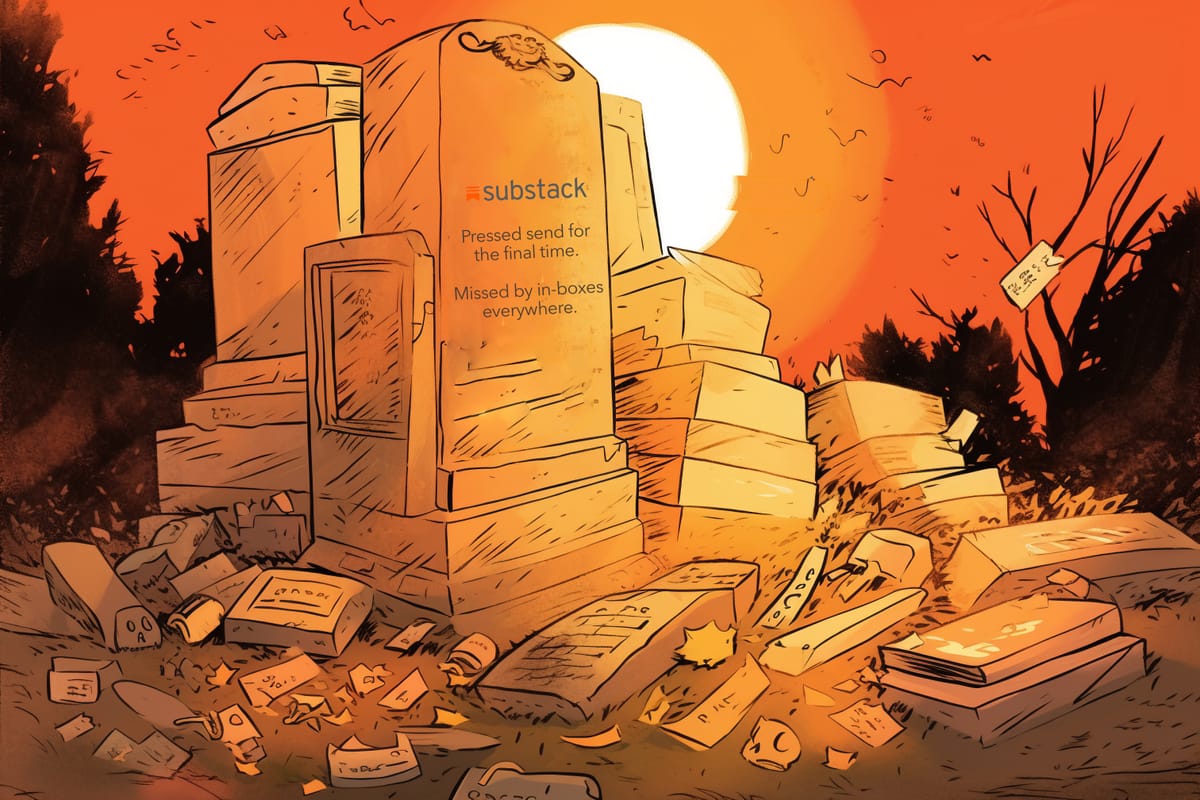Does it matter if Substack is in financial trouble?
Substack has managed to make itself all but synonymous with "newsletters". If the platform is struggling financially, could that have an impact on the whole newsletter ecosystem?

Is Substack in danger of running out of money? We know they failed to raise a new round of VC money last year. We know they laid off well over 10% of their staff to “extend their runway” (make their existing cash last longer). But I don’t think many people were worrying about their long-term viability. Their UK partnerships head was on the Media Voices podcast just a few weeks ago, painting a rosy enough picture that even the often cynical Chris was won over.
But, writing for The Verge, Elizabeth Lopatto makes a compelling case that the crowdfunder they’re exploring (see yesterday’s post) might actually be the result of more significant financial issues than we were aware of:
In the FAQ section of Wefunder, I notice someone is asking if there are plans to sell or go public, which Chris Best, co-founder and CEO, dodges except to say, “Don’t invest more than you can afford to lose.” Nor has anyone answered an extremely reasonable question about monthly net income, cash burn, and runway, not even by dodging.
The co-founders, typically quite punchy in defence of their company on Twitter, have yet to respond to the piece, which is… interesting. And it does raise a big question for those of us who have been bullish about the future of newsletters.
Could Substack drag the newsletter boom down with it?
Given how remarkably good Substack has been at building publicity around itself, to the point where many people “start a Substack”, rather than “starting a newsletter”, could its theoretical demise hurt publishers?
Sure, the sheer level of association between newsletters and Substack means we’ll almost certainly get a wave of articles from the usual suspects predicting the demise of newsletters. And those articles would be, frankly, asinine. Email newsletters have existed in varying forms for the best part of 40 years, and they’re not going to go away any time soon.
Sure, it might trigger a short-term downturn in the number of new newsletters created, as the hype goes out of the market. That’s inevitable. Podcasting has been through this hype/downswing cycle twice now. Newsletters will inevitably go through it, too.
Does it matter to publishers?
No, it really doesn’t. Apart from the handful of publications that have decided to experiment with newsletters on the platform, like the New Statesman example I linked to a week or so back, their exposure to Substack is fairly minimal.
If anything, it might be good for publishers. Substack have done an outstanding job of surfing a pre-existing wave, and bringing more attention to the idea of newsletters as a result. Publishers have been able to capitalise on that increased interest by revamping their own newsletter offerings, and capturing a share of a growing audience who see the value in the form.
If Substack was to suddenly wipe out in a massive breaker and never resurface, well, that just frees up attention share for existing publishers with savvy newsletter editors to scoop up some of the precious, precious attention it would leave behind. Indeed, it’s possible that a burst of negative publicity around a notional collapse of the platform would put journalists off the idea of starting their own newsletters.
Less competition for the same attention? A big marketing advantage with marketing via the rest of their products? That’s an opportunity.
Does it matter to independent creators?
No — or not at the moment, at least. Oh, sure, it’s going to hurt for those creators on Substack. While most of the competitive platforms out there — like Ghost, Buttondown and Beehiiv — have Substack importers up and ready to go, the process can be involved and painful, especially for non-technical users. But it can be done.
That’s the delight of the open nature of newsletters. If you can get your content in some reasonable format, and the subscription data, you can move platforms fairly easily. So, as long as a troubled or pivoting Substack gives some sort of warning to its users, they’ll be able to escape a struggling platform.
Look, nobody wants to be forced to move platform. It’s a pain in the rear end, even when you choose to do it. A rushed, forced migration, like the closure of Revue, amps up the pain. And, unless that’s your thing (no judgement here…). Most of us would rather avoid it. But, as I said, it can be done. Your business, and newsletter, can thrive elsewhere.
Of course, Substack has been trying, subtly, to make that process harder, by adding specific features, like the app and the chat interface. But these can be replaced. Should Substack go further in building that VC-loved moat, but finding other ways of locking creators in…
Well, that would be informative in its own right.
So… does it really matter?
Fundamentally, no. And that’s because there’s a vibrant ecosystem of newsletter platforms out there ready to take up the slack. This isn’t like the Twitter situation, where there’s no single replacement ready for people who flee the burning platform. Much as I enjoy Mastodon, it’s still not quite there for the average user, for example.
I genuinely wish Substack well. I hope the crowdfunder succeeds, and I hope they find a path to profitability before they run out of “runway”. (Why can’t startup types just say “cash”?) Competition is good for newsletters, and Substack has proven itself to be a fierce competitor, helping drive the entire field forwards. The ecosystem would be poorer without it.
But the newsletter world would survive — and thrive — even without Substack.





